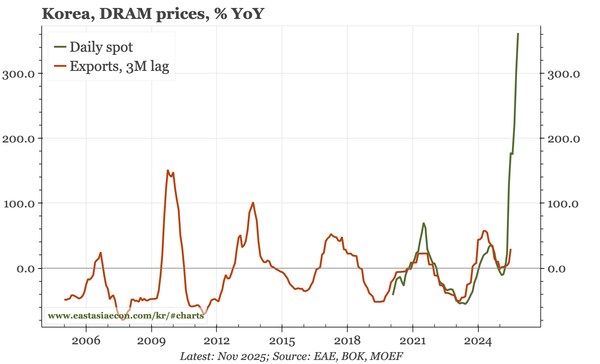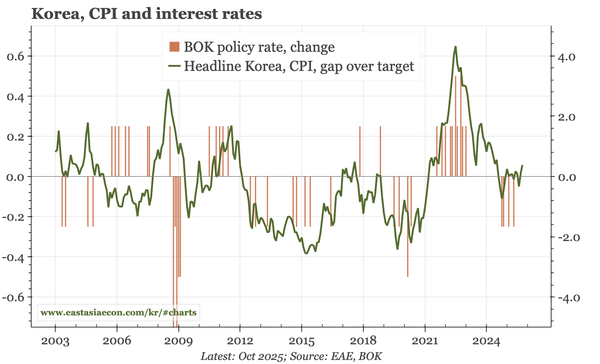Korea – still no clear lift in growth
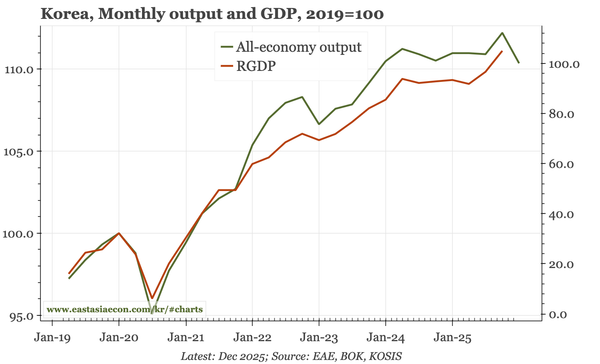
The BOK's revisions to the GDP outlook yesterday were modest. But in today's October output data, there's little sign of any improvement at all. The data are affected by the long Chuseok holiday, and will likely look better through year-end. Still, it is clear the economy still faces headwinds.
Korea – was when, now also whether

The BOK didn't raise growth forecasts above potential, but still signalled some concern about the resilience of inflation. That sounds a touch stagflationary, and was used to justify a step back from its loosening stance. Growth only gets above potential in its chip-driven upside scenario.
Korea – below potential, but are risks skewed to the upside?

I doubt the BOK can raise '26 growth forecasts above its estimate of potential and so shift its loosening stance. What's the wriggle room around that? 1) It says the memory cycle means risks are skewed to the upside 2) Citing financial stability risks, more members suggest rates won't change.
Korea – household offshore equity buying and the KRW

Global factors like US rates and JPY weakness are dragging down the KRW. But there are also local drivers, particularly Korea's big buying of overseas equities. For both the NPS and households, I would expect that to slow, with the reversal likely to be sharp if global markets really sell off.
Korea – watching semi export prices
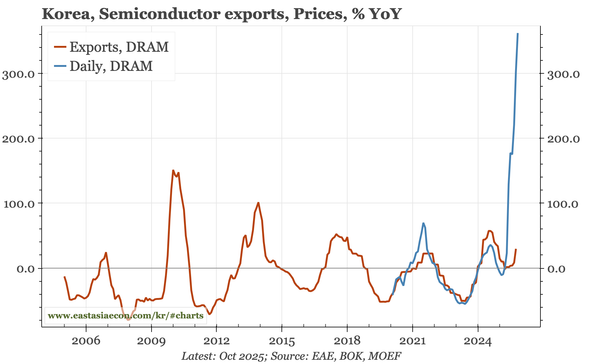
Import prices are rising, but not by enough to think upstream inflation is about to explode. More interesting are export prices. Auto export prices aren't rebounding. By contrast, semiconductor export prices seem to be gaining upwards momentum – which is important given the rise in spot DRAM prices.
Korea – "financial dominance"
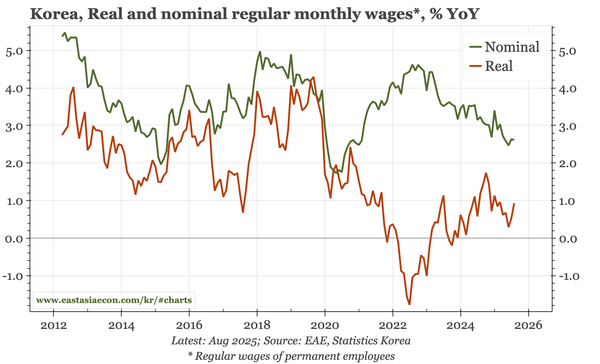
With October meeting minutes, export and labour market data, there's enough to review the outlook for Korea. I think the underlying economic picture remains consistent with more cuts. But the minutes show Board members continuing to prioritise concerns about KRW weakness and house price strength.
Korea – CA surplus not helping the KRW
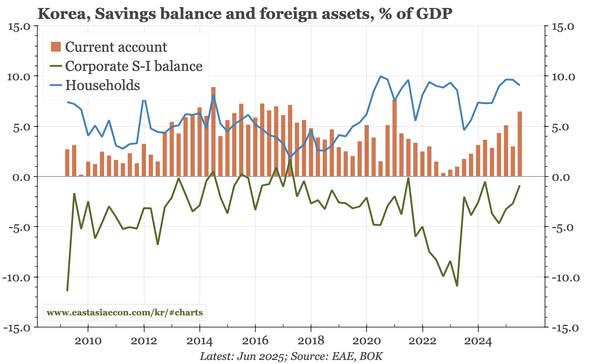
Data today show Korea's current account surplus remaining at over 5% of GDP. The fundamental driver is a fall in borrowing by the corporate sector. This structural surplus hasn't started to support the KRW. One reasons is continued outflows from the NPS.

